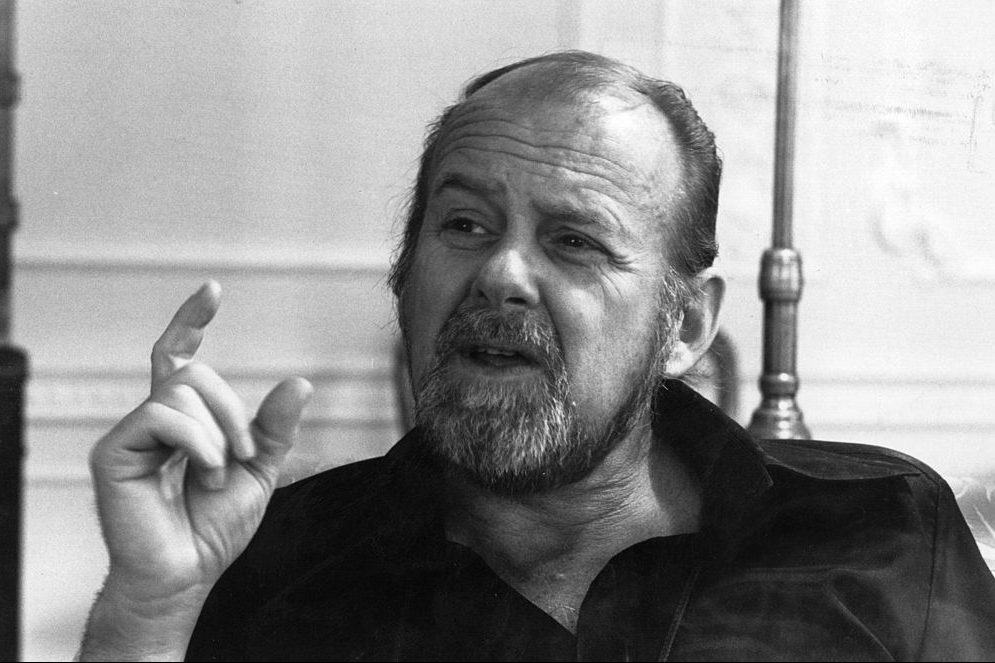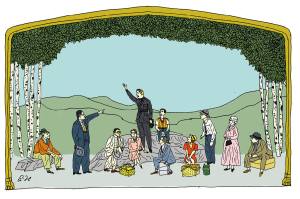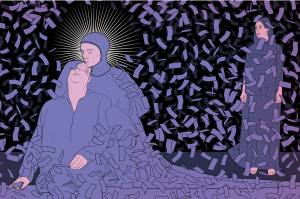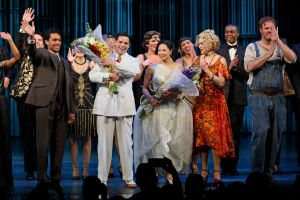To kick off the new revival of Bob Fosse’s Dancin’, a lone performer comes onstage to inform us that, per the recommendation of the WHO, the CDC, the US Surgeon General and sundry others, the evening’s proceedings will not include any plot, message, or moral. I pinched myself.
Wearing Fosse’s signature bowler hat, the speaker, played by Manuel Herrera, promises nothing but “dancing, some singing… and more dancing” — and for the most part, this dazzling two-and-a-half-hour musical revue lives up to that promise. Directed and staged by Wayne Cilento, who danced in the original production, the first revival of Dancin’ on Broadway is a treasure trove for Fosse fanatics, a smart introduction for the unfamiliar and a delight for everyone between.
Consider the size and scope of such an undertaking. In 1978, Fosse had his company of sixteen, some poached from the American Ballet Theater and Alvin Ailey, rehearse a month longer than the usual two in order to nail down the details. Today, Cilento and Christine Colby Jacques (also in the original) had to dig through grainy footage from a Japanese touring production to reconstruct many of the numbers. Twenty-two very capable dancers make up the present cast, and when you factor in the range of set design, lighting, animation on the screen upstage and, most of all, musical genres — from classical to Broadway standards to Jerry Jeff Walker —the ambition, breadth and sheer pageantry put it in a different class from your usual Broadway fare, closer to a production by a contemporary ballet company.
As a choreographer, Fosse practiced a ballet-like devotion to line, even hoping at one point to stage a full ballet of his own. But he had other reasons to make a musical with no story. When he began work on Dancin’ in 1977, on a break from production of the semi-autobiographical film All That Jazz (1979) and only a few years removed from a heart attack, Fosse didn’t have the stomach for the drawn-out process, the “midnight meetings,” that developing a story with a collaborator entailed. “I just decided to meet myself at midnight,” he later explained. Fosse’s contempt for the financial side of show biz, meanwhile, is readily apparent in All That Jazz; one scene splices close-ups of the protagonist’s open-heart surgery among longer shots of his Broadway producers contriving with insurance agents to recoup losses.
It all gives the impression that Fosse, for the moment, was not keen on telling the sorts of stories that could be produced on Broadway. Despite his indifference to plot, though, purists may bristle to learn that many of the numbers here didn’t appear in the original production. (It’s unclear whether Cilento and Colby Jacques chose not to reconstruct certain elements or, for lack of evidence, simply couldn’t.)
Some updates land better than others. In the original, co-producer Bernard Jacobs nixed Fosse’s “Big City Mime” section, in which a fresh-faced lad (Peter John Chursin) encounters the thrills and depredations of urban life; here, as if to make amends, the basic contours of “Big City Mime” have been cobbled together from other Fosse shows (Pippin, Sweet Charity, Liza with a “Z”), giving us a fair sense of his general treatment of the subject. But the “Big Deal” sequence, from Fosse’s 1986 musical of the same name, retreads jailhouse territory covered in the earlier number “Recollections of an Old Dancer,” sitting oddly against Jacob Guzman’s haunting solo to the tune of “Mr. Bojangles.”
In another case the “Female Star Spot,” set to Dolly Parton’s “Here You Come Again,” has been stuffed with ad-libs poking fun at the song’s feminine submissiveness. I don’t know how this squares with Fosse’s original treatment of the piece — which likely wasn’t straightforward, given the deadpan title — but it’s hard to imagine him taking such a hostile stance toward his source material, in an otherwise sanguine production.
In the main, though, the show remains alive to the nuance and complexity that distinguish Fosse from his many debtors. You wouldn’t confuse the “America” sequence for jingoism, but its wholly unembarrassed treatment of “When Johnny Comes Marching Home” must have given right-thinking New Yorkers pause in the years after the Vietnam War, and I suspect Dylis Croman’s proud solo will do the same today. The four-part “Percussion” section is a rhythmic carnival: elegant, spot-lit clockwork (Karli Dinardo, Mattie Love, Ida Saki), a boxers’ training session (Yeman Brown, Jōvan Dansberry, Manuel Herrera), a whole train of animal delights and, last, a lone ballet dancer (Ron Todorowski) animated by the odd pulsations of Edgard Varèse’s “Ionisation.” And “Benny’s Number” — a tribute to Benny Goodman’s “Sing, Sing, Sing,” with drummer Gary Seligson holding court above a dizzying dance-hall — is nearly worth the price of admission itself.
This article was originally published in The Spectator’s May 2023 World edition.















